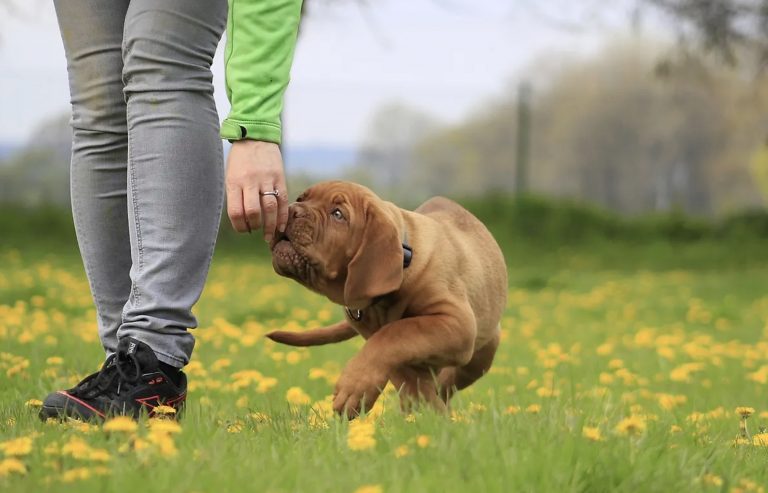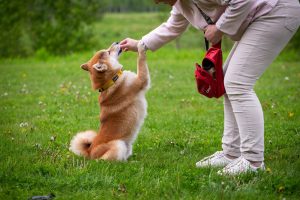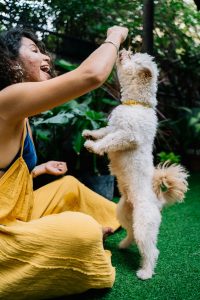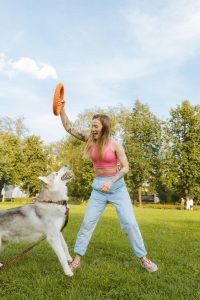Owning a dog is a joy and privilege, but also carries responsibility. If you want to bring a canine companion into your life, you should seriously think about the commitment you are making. What should you do to satisfy the criteria of responsible dog ownership? How can you become a responsible dog owner?
Protecting the health and well-being of your puppy is important. But a big part of dog ownership is making sure your dog has a high quality of life.
Looking at the numbers, 70% of American households own a pet. Most of that is dog ownership, so let’s take a look at how you can become a responsible pet owner.
Today, we will talk about three things you have to teach your puppy. With those three, you have done more than half of the job. It doesn’t matter if you have dogs recognized by the American Kennel Club or not, these rules apply to any pet dog.
Teach your dog to know its name
This is one of the first things in dog training. You have to teach your dog to know its name. It is a command that starts everything. When your puppy knows its name, it will look at you for guidance and the next command.
How to do it? The training technique is easy and everyone can do it. And it doesn’t matter how you call your puppy. Choose any name you like, and then use positive reinforcement training to teach your dog to respond to its name. Here are a few steps on how to get to the finish line.
- Start in a quiet and enclosed area, the living room for example. Sit in the living room, and wait for your dog to look at something else. Say your puppy’s name in a bright and happy tone. When your pet dog turns to you, mark the behavior with “yes” or “good job” and give him a treat. This tells your puppy it has done a good job
- Repeat the process several times throughout the day. But in the beginning, make sure you are close to your puppy
- Once your puppy instantly reacts to you, up the ante. Move across the room to increase the distance, and call your dog by its name
- The next step is to increase the challenge. Call your dog, but wait for it to look at you for a second or two, do not get satisfied with an instant look, and then turn away. Always mark the behavior and reward with treats
- Now, play the game while cooking dinner, watching television, or any other time. Be consistent with your command and rewards
- Time to take things outside, starting in an area with little to no distractions, and then gradually increasing distractions
Teach your dog to sit
Sit is the first taste of success. It gives you the first taste of a relationship with your dog and communication you can use in a day-to-day scenario, obedience training, and socialization training.
Sit is arguably the most important command your dog should know. You can use it to practice dog manners or for any activities.
Here is an example, you can use sit when you feed your puppy. You put him in a sit position, and then you feed him dog food. Or, even for things like access to your sofa. There is nothing wrong with letting your animal on the sofa or on the couch. But you have to set boundaries, you have to teach your dog that going up on the sofa is a reward for calm behavior.
Think of it this way, you are the master of your home, and you set the boundaries. Put your dog in a sit position, and then allow him to go up on the couch.
So, how to make any dog pooch sit? Here is the step-by-step guide.
- Have your dog in a standing position and then hold a treat near its nose
- Keep the treat near the nose but move your hand in an arc over his hand. As your puppy raises his head to follow the treat, his butt will naturally fall to the floor
- The moment your puppy sits, mark the behavior with yes, and give him a treat
- Repeat the process several times before taking things to the next level
- As the dog starts sitting for a treat, you can add a verbal command “sit”. Remember, never say the verbal command before your dog moves into position. If you do that, you risk teaching the dog to associate the word sit with a different movement
Teaching your dog to stay
The third step to responsible pet ownership is teaching your puppy to stay. You can utilize this command for a number of obedience behavior issues, same as with sit.
But most importantly, stay is precious for the safety of your puppy when you are outside. The command also allows you to work on leadership and the manners of your puppy. Teaching stay is quite simple. Here are a few steps.
- Have your dog in a standing or sitting position
- Give him a hand command to stay and then count to five
- When your dog waits for five seconds (you can start with three), mark with yes, and give him a treat
- Gradually increase the length of staying and reward
- As you reach a decent amount of length, increase the distance from which you can move and give the command to stay
- When you are happy with the distance and length, you can even put a treat in front of your puppy and ask to wait
How can three commands transform your dog?
You might be thinking being a responsible pet parent is more than just teaching a dog its name, the sit command, and the stay command.
Yes, but these three commands are the essence of everything you will do later on. Being able to call your animal by its name, sit him, and have him stay, shows you are a calm and consistent leader.
And only such a leader can be a responsible pet owner. With these three commands, you have the ability to create and always reinforce rules and boundaries within the home, family, and environment.
Of course, veterinary care, rabies vaccination, pet insurance, picking up dog waste, and other factors play into you being a responsible pet parent. But today, I wanted to talk about the training part of dog acquisition and being a good dog owner.






